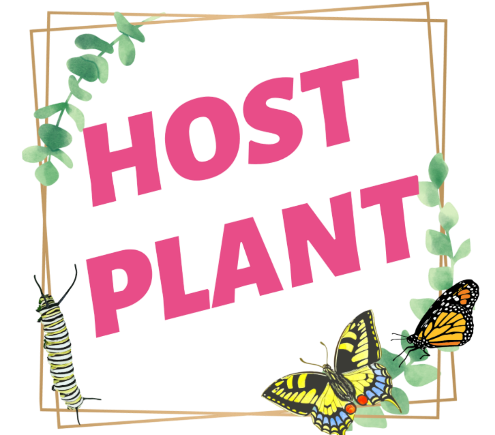
Fennel
Used in Italian cooking, fennel is short-lived perennial in the parsley family. Both the leaves and the stems of this herb can be used to flavor dishes. Fennel is also one of the host plants for the Black Swallowtail Butterfly.
|
Bronze |
|
Foeniculum vulgare |
|
Easy |
|
Intermediate |
|
1-3 years if properly stored |
|
Short-lived Perennial |
|
7-10 days |
|
65-85 F |
|
Soak 1-2 days |
|
1/8 – 1/4 inch |
|
4-6′ |
|
Full Sun |
|
April and May |
|
No |

Growing Tips




When to Start
Spring: Direct sow after all danger of frost has passed. (May 1 for Jefferson, GA)
Transplant: Tricky*. Start indoors 4 weeks before your last frost date. Harden off and transplant after all danger of frost has passed. (May 1 for Jefferson, GA)
How to Grow
When starting fennel, soak the seeds 24-48 hours beforehand to aid germination. Direct sow the seeds to a depth of 1/4 to 1/8 inch. For starting indoors, using a larger biodegradable pot is strongly recommended. Fennel grows from a tap root and doesn’t like its roots disturbed. It is also a good idea to keep the plant from becoming rootbound for the same reason. Also, keep in mind the 1-2 weeks needed for hardening off and choose the pot size and planting time according.*
When the plants are 4-6” high thin to 12-18 inches. Fennel likes full sun and well-draining soil. It also prefers slightly acidic soil. To keep the fennel more contained, a 10” deep container can be used.
Fennel can be grown for its culinary uses or as an ornamental backdrop. It is also a host plant for the caterpillars of the black swallowtail butterfly.
Plant care
While fennel is a perennial it is often grown as an annual. It likes moist but not waterlogged soil. Water when it feels dry one inch down. Fennel likes moderate humidity and prefers temperatures between 60-70 F. For GA, make sure you space your plants 12-18 inches apart to help with air circulation. Fennel will bolt in high heat.
Harvesting
Pinch flowers off to keep the plant from going to seed until you are ready for it to do so. This will keep the foliage tasting its best. You can harvest the leaves though out the growing season and use them both raw or cooked. Harvesting the leaves will also create a bushier plant. The bulb can be harvested as soon as the base of the stem becomes swollen.
Overwintering
In some areas, you need to over-winter fennel for a second year. Before a frost, harvest the rest of the foliage. Insulate with mulch or row covers.
Pro Tip!
Incompatibles: Beans (all kinds), caraway, coriander, peppers, and tomatoes.
Grows well with: Most anything
Host Plant
When using fennel as a host plant, it’s a good idea to plant at least 6 plants. This should prevent the caterpillars from running out of food before they form a chrysalis. This number can be reduced if other host plants for the black swallowtail are planted. To provide food for the adults, plant some nectar sources, like bee balm and zinnias, near the host plants.
How to use
It is used to enhance fish dishes and soups and the bulbs can be sautéed or roasted with salt and butter. Fennel seeds can be used to make tea. Refrain from adding seeds to boiling water as this will destroy the nutrients.
To make tea: Boil 2 cups of water and let rest for about 3 minutes. Add 2 teaspoons of fresh seeds or 1 teaspoon dried. Let steep to the desired strength and then strain out the seeds. Mix it up by adding the seeds to a cup of black tea.
Seed Saving

Isolation Distance
Fennel will Cross with Dill. Fennel is insect-pollinated and different varieties may cross unless separated by a one-half mile.
Instructions
Once the seed heads turn brown and dry, cut the stalks and store them in a dry place. Wait until they are thoroughly dry then place them in a paper bag. Gently shake the seeds free.
Seeds and finer chaff are easy to separate by a variety of methods. One way is to use two screens of varying mesh, one a little smaller than the seeds and the other a little larger. The first screen lets anything smaller than the seeds fall through, and the second lets the seeds through and stops anything larger.
Features
- Container friendly
- Culinary
- Host plant for the Eastern Tiger Swallowtail butterfly
- Attracts pollinators
- Bronze: Heirloom. Very decorative bronze-hued lacy foliage. Its unusual color makes a striking accent plant, a sophisticated addition to salads, or as an elegant garnish. The seeds may be used like those of any fennel.

Fennel doesn’t like to have its roots disturbed. Use a biodegradable pot for transplanting.
For states with higher humidity, make sure you observe proper plant spacing to improve airflow.
Sources:
Gardeningknowhow.com
Thespruce.com
The New York Botanical Garden, Herbal Handbook, Clarkson Potter.
Helmer, Jodi. Growing Your Own Tea Garden: the Guide to Growing and Harvesting Flavorful Teas in Your Backyard. Fox Chapel Publishers International Ltd., 2019.
